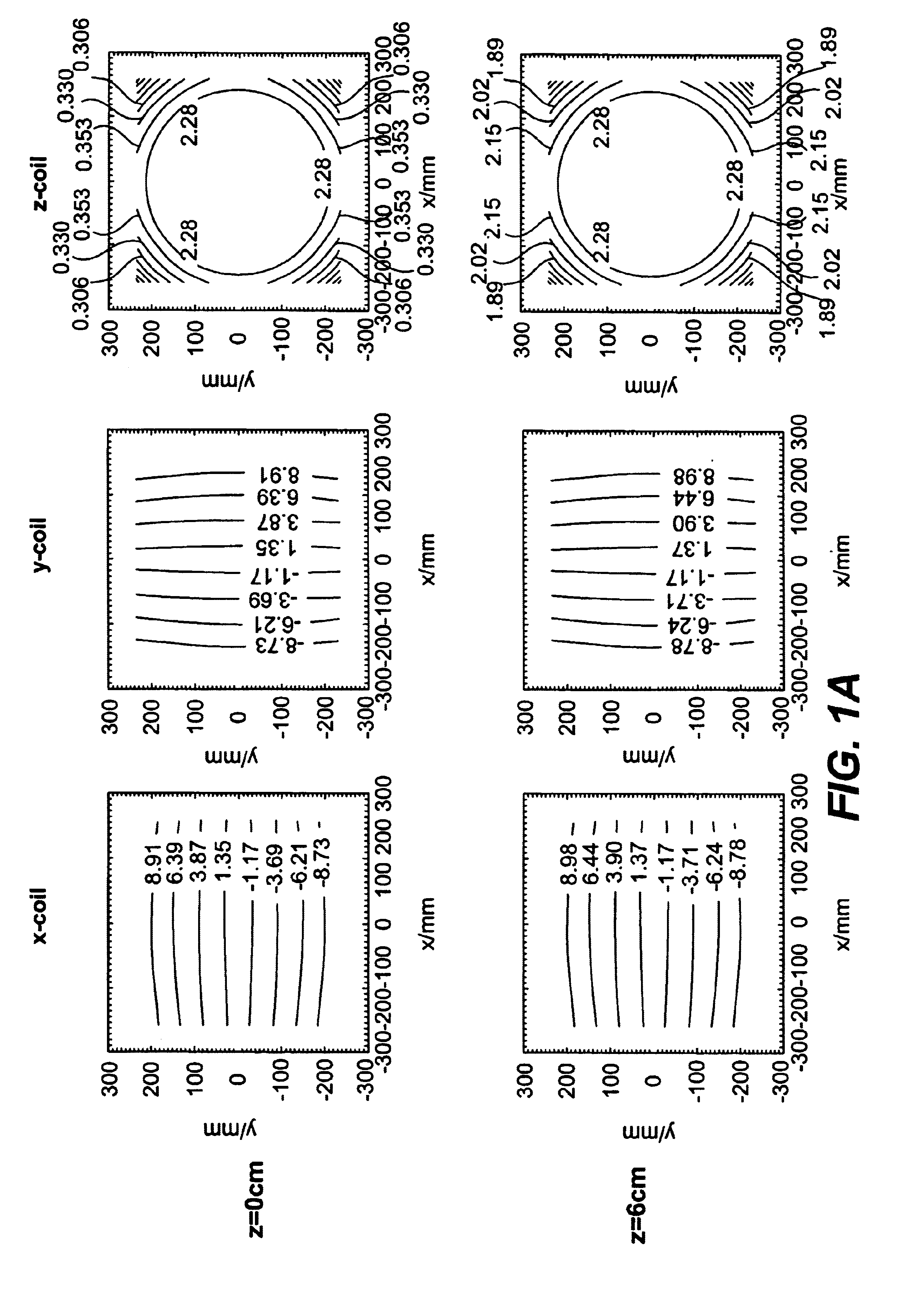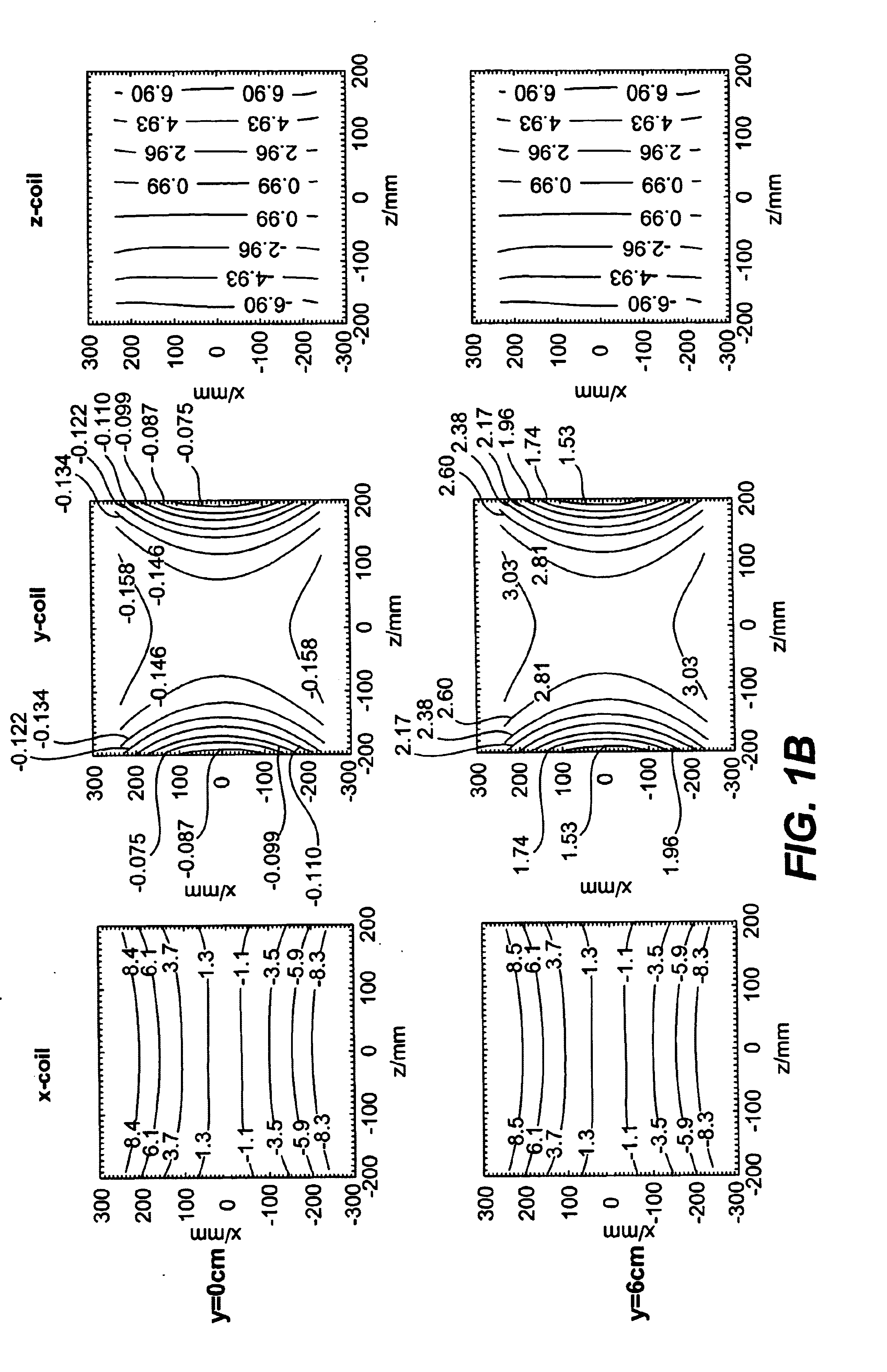Correction of the effect of spatial gradient field distortions in diffusion-weighted imaging
- Summary
- Abstract
- Description
- Claims
- Application Information
AI Technical Summary
Benefits of technology
Problems solved by technology
Method used
Image
Examples
Embodiment Construction
[0021]The new generation of high performance gradient systems utilizes gradient coil designs with modest field of view in order to limit dB / dt, which can cause nerve stimulation. As a result, magnetic field gradients can exhibit significant non-linearities. Such non-linearities are well known to cause spatial image warping in MR images, and methods are routinely used to retrospectively correct geometric distortions. Although image warping errors are well recognized, little has been reported about the influence of gradient distortion on diffusion-weighted imaging (DWI) or other quantitative techniques. The fact that spatially non-linear diffusion gradients can affect DWI has been mentioned briefly by LeBihan, Diffusion and Perfusion Magnetic Resonance Imaging, Raven Press, New York, 1995 and others including Bernstein et al., U.S. Pat. No. 6,163,152, supra, in which a relative gross correction was proposed that also only works for scalar measurements, but overall this effect seems to...
PUM
 Login to View More
Login to View More Abstract
Description
Claims
Application Information
 Login to View More
Login to View More - R&D
- Intellectual Property
- Life Sciences
- Materials
- Tech Scout
- Unparalleled Data Quality
- Higher Quality Content
- 60% Fewer Hallucinations
Browse by: Latest US Patents, China's latest patents, Technical Efficacy Thesaurus, Application Domain, Technology Topic, Popular Technical Reports.
© 2025 PatSnap. All rights reserved.Legal|Privacy policy|Modern Slavery Act Transparency Statement|Sitemap|About US| Contact US: help@patsnap.com



